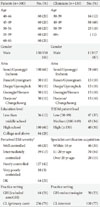1. American Diabetes Association. Standards of medical care in diabetes: 2010. Diabetes Care. 2010. 33:Suppl 1. S11–S61.
2. Boutati EI, Raptis SA. Self-monitoring of blood glucose as part of the integral care of type 2 diabetes. Diabetes Care. 2009. 32:Suppl 2. S205–S210.
3. Nathan DM, Buse JB, Davidson MB, Heine RJ, Holman RR, Sherwin R, Zinman B. Management of hyperglycemia in type 2 diabetes: a consensus algorithm for the initiation and adjustment of therapy: a consensus statement from the American Diabetes Association and the European Association for the Study of Diabetes. Diabetes Care. 2006. 29:1963–1972.
4. Shiraiwa T, Kaneto H, Miyatsuka T, Kato K, Yamamoto K, Kawashima A, Kanda T, Suzuki M, Imano E, Matsuhisa M, Hori M, Yamasaki Y. Post-prandial hyperglycemia is an important predictor of the incidence of diabetic microangiopathy in Japanese type 2 diabetic patients. Biochem Biophys Res Commun. 2005. 336:339–345.
5. Hanefeld M, Cagatay M, Petrowitsch T, Neuser D, Petzinna D, Rupp M. Acarbose reduces the risk for myocardial infarction in type 2 diabetic patients: meta-analysis of seven long-term studies. Eur Heart J. 2004. 25:10–16.
6. Hanefeld M, Koehler C, Schaper F, Fuecker K, Henkel E, Temelkova-Kurktschiev T. Postprandial plasma glucose is an independent risk factor for increased carotid intima-media thickness in non-diabetic individuals. Atherosclerosis. 1999. 144:229–235.
7. Jackson CA, Yudkin JS, Forrest RD. A comparison of the relationships of the glucose tolerance test and the glycated haemoglobin assay with diabetic vascular disease in the community. The Islington Diabetes Survey. Diabetes Res Clin Pract. 1992. 17:111–123.
8. DECODE Study Group, on behalf of the European Diabetes Epidemiology Group. Glucose tolerance and cardiovascular mortality: comparison of fasting and 2-hour diagnostic criteria. Arch Intern Med. 2001. 161:397–405.
9. Donahue RP, Abbott RD, Reed DM, Yano K. Postchallenge glucose concentration and coronary heart disease in men of Japanese ancestry. Honolulu Heart Program. Diabetes. 1987. 36:689–692.
10. Nakagami T. DECODA Study Group. Hyperglycaemia and mortality from all causes and from cardiovascular disease in five populations of Asian origin. Diabetologia. 2004. 47:385–394.
11. Nam HW. Training program for diabetes educator. J Korean Diabetes Assoc. 1998. 22:S49–S53.
12. Balcou-Debussche M, Debussche X. Type 2 diabetes patient education in Reunion Island: perceptions and needs of professionals in advance of the initiation of a primary care management network. Diabetes Metab. 2008. 34(4 Pt 1):375–381.
13. Do DV, Nguyen QD, Bressler NM, Schachat AP, Solomon SD, Melia M, Bressler SB. Hemoglobin A1c awareness among patients receiving eye care at a tertiary ophthalmic center. Am J Ophthalmol. 2006. 141:951–953.
14. Harwell TS, Dettori N, McDowall JM, Quesenberry K, Priest L, Butcher MK, Flook BN, Helgerson SD, Gohdes D. Do persons with diabetes know their (A1C) number? Diabetes Educ. 2002. 28:99–105.
15. Heisler M, Piette JD, Spencer M, Kieffer E, Vijan S. The relationship between knowledge of recent HbA1c values and diabetes care understanding and self-management. Diabetes Care. 2005. 28:816–822.
16. Iqbal N, Morgan C, Maksoud H, Idris I. Improving patients' knowledge on the relationship between HbA1c and mean plasma glucose improves glycaemic control among persons with poorly controlled diabetes. Ann Clin Biochem. 2008. 45(Pt 5):504–507.
17. Davidson J. Should postprandial glucose be measured and treated to a particular target? Yes. Diabetes Care. 2003. 26:1919–1921.
18. Monnier L, Lapinski H, Colette C. Contributions of fasting and postprandial plasma glucose increments to the overall diurnal hyperglycemia of type 2 diabetic patients: variations with increasing levels of HbA(1c). Diabetes Care. 2003. 26:881–885.
19. Bastyr EJ 3rd, Stuart CA, Brodows RG, Schwartz S, Graf CJ, Zagar A, Robertson KE. IOEZ Study Group. Therapy focused on lowering postprandial glucose, not fasting glucose, may be superior for lowering HbA1c. Diabetes Care. 2000. 23:1236–1241.
20. Gallwitz B. Implications of postprandial glucose and weight control in people with type 2 diabetes: understanding and implementing the International Diabetes Federation guidelines. Diabetes Care. 2009. 32:Suppl 2. S322–S325.







 PDF
PDF ePub
ePub Citation
Citation Print
Print





 XML Download
XML Download